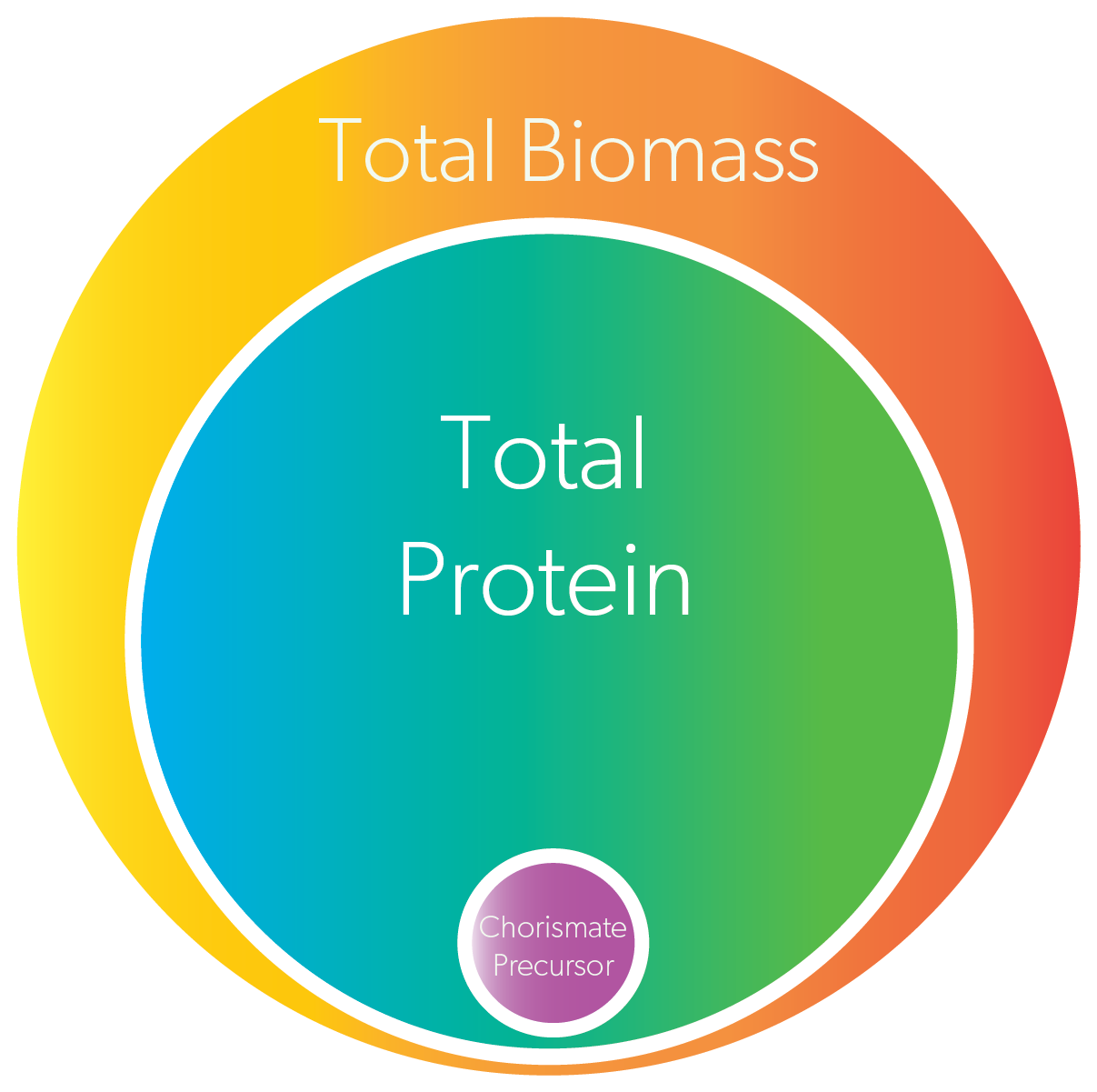
TARGET ORGANISM
"The concentration of protein and vitamins in Spirulina has led many to classify it as the 'most nutrient dense food on the planet.' Compared to other foods gram for gram, it lives up to this reputation"
We are currently using the cyanobacteria genus Synechococcus elongatus as a model for the FDA-approved Arthrospira platensis, commonly known as Spirulina. By focusing on an edible cyanobacteria, we hope to generate an easily consumable, photosynthetic culture of vitamins or pharmaceutical synthesizers.
 Biological composition of Arthrospira platensis, commonly known as Spirulina.
Biological composition of Arthrospira platensis, commonly known as Spirulina.
In researching host organisms, we discovered that the cyanobacteria A. platensis produces a wide range of essential vitamins and supplements. A. platensis is a cyanobacteria that is Generally Recognized as Safe (GRAS) for consumption by the FDA[2]. The nutrient composition of A. platensis consists of 65% protein (including all 8 essential amino acids), 15% carbohydrates, 6% lipids, carotenoids, vitamins B1, B2, B3, B5, B6, B7, B9, D, E, antioxidants, and minerals including potassium, calcium, chromium, copper, iron, magnesium, manganese, phosphorus, selenium, sodium, and zinc[3].
Upon further investigation, it became apparent that a system for genetic manipulation in A. platensis hadn’t been well-established[4] and developing such a system would not be possible within the iGEM time constraints, not to mention that it is near impossible to obtain an axenic live culture within the United States.
Therefore, an axenic strain of A. platensis, UTEX 2340, is being created for eventual sequencing and release to NCBI. This is being done in an effort to help the scientific community by providing a better understanding of A. platensis genetics. Sequencing the whole genome opens the possibility of applying the genetic modifications in PCC 7942, described in the Metabolic Engineering section for acetaminophen and vitamin B12, into A. platensis as well.
 TRITC HYQ (EX 530-550, DM 565, BA 590-650) filter
TRITC HYQ (EX 530-550, DM 565, BA 590-650) filter
 Open filter
Open filter
 FITC-HYQ (EX 460-500, DM 505, BA 510-560) filter
FITC-HYQ (EX 460-500, DM 505, BA 510-560) filter
Images of A. platensis using an epifluorescence microscope Nikon Eclipse E400.
The UTEX Culture Collection of Algae at the University of Texas at Austin provided a xenic strain, UTEX 2340, of A. platensis along with a modified SAG medium to raise a base culture. Due to a lack of detailed axenicity protocols for A. platensis, a new protocol was constructed from several protocols[5, 6, 7]. This new protocol was implemented and includes ultrasonication/bead-beating, filtration, pH treatment, antibiotic treatment, and serial dilutions in order to rid A. platensis of xenic microorganisms. To learn more about the protocols involved, check out our notebook page here!





